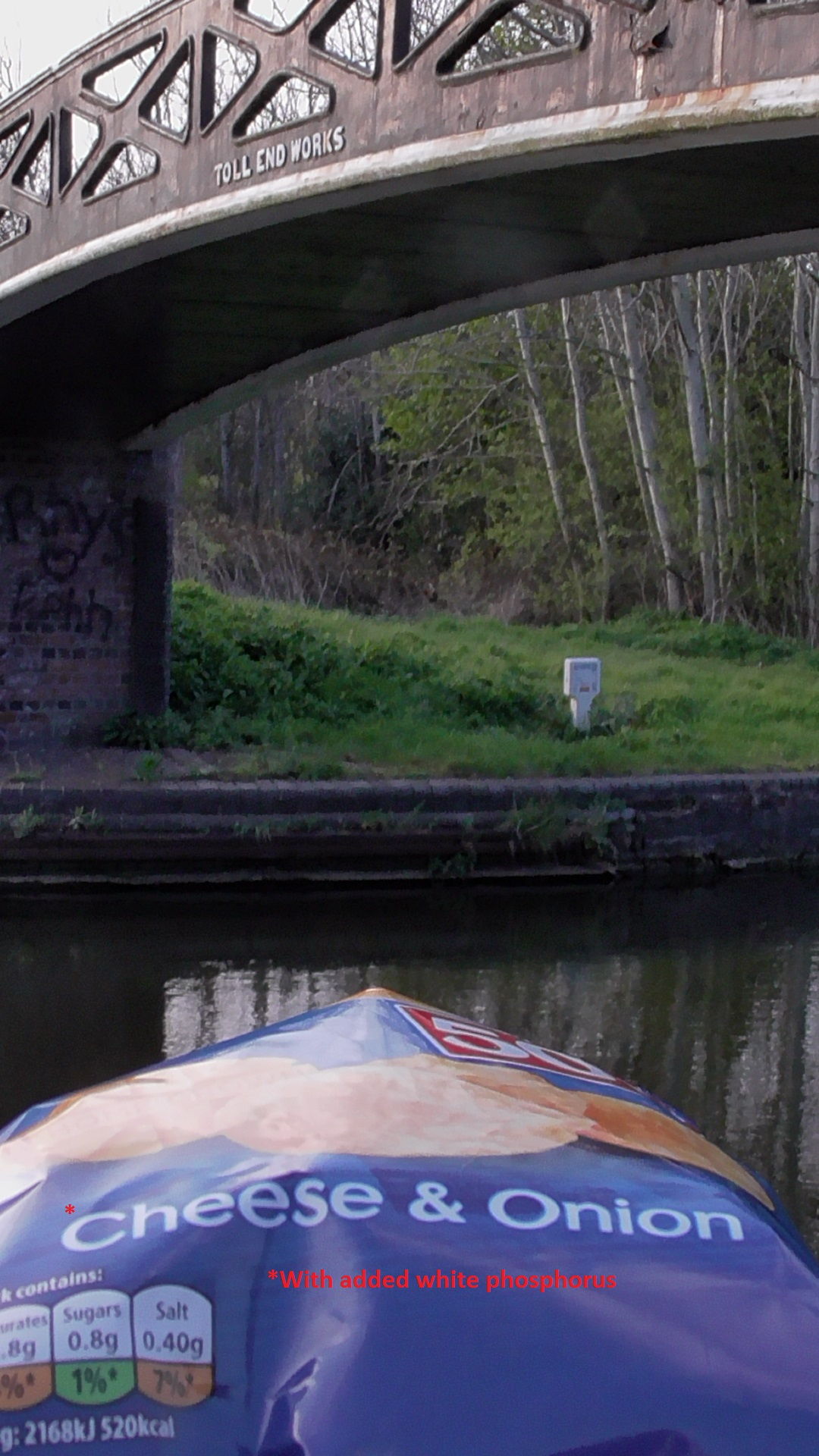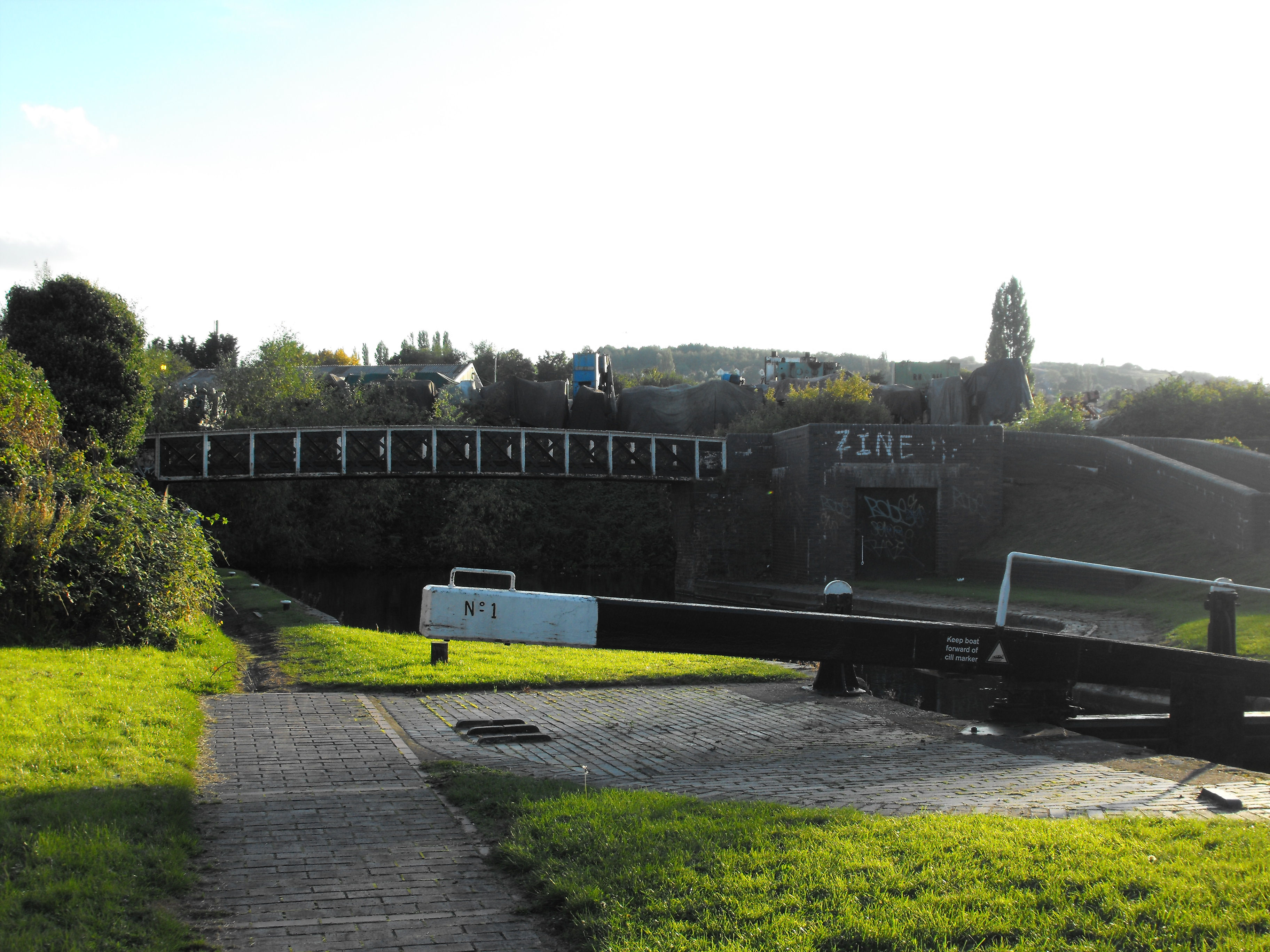This website has put together evidence and information from a variety of primary sources. Eye witnesses who remember the historic dumping of waste at Rattlechain may be starting to get a little grey, if not there already, but the vividness of their recollections is important because there are those with purely financial intent who would wish to rewrite the toxic legacy into one of present day wide eyed “risk management” . Any fool looking from the outside can pretend that a waste management licence somehow keeps people “safe”.
Canal enthusiast and narrow boat owner Malcom Edge is one person who remembers the real site as it stood, and it is with great pleasure that I reprint a part of his memoir below. I’ve added a few useful links and pictures to illustrate. It was after having seen his original blog concerning canal stories from the 50’s,60’s and 70’s that pieces of the Rattlechain jigsaw started to fit together, and that the bird deaths were not just something that could be put down to “natural causes”. I will always be grateful to him that he played a big part in solving the mystery of what lies beneath rattlechain lagoon.
If you have any recollections of the lagoon, or surrounding area when waste was being dumped there please get in touch.
The Smell of the cut–
BY MALCOLM EDGE © (Originally published as “A lads eye view of the canals in the 1950′s-1970’s. Chapter 8 Companies and cargoes -The smell of the cut.”
“One haulage company who were prominent through the sixties and into the seventies was Alfred Matty & Sons Ltd , based in Deepfields Coseley. They operated a wide array of boats on a a variety of contracts which included dredging, civil engineering projects such as the laying of the Natural Gas pipeline in the early seventies, and also a long standing contract to which the whole of the BCN owed a lot——–It’s smell!- for Matty’s had a contract for the disposal of phosphorous waste in liquid suspension from Albright and Wilson’s chemical plant in Oldbury to an open marlhole at Dudley Port.
As far as I can recall the company used three motor boats on this contract. ‘Maurine’ a wooden Ricky , whose bows were so rotten you could have put your fist through the holes in them, an ex-Fellows Moreton and Clayton steamer said to be the ‘Monarch’ and the large Northwich motorboat ‘Stratford’. All three motorboats operated in pairs with a range of steel ‘railway’ type boats although the company preferred wooden craft for this work as the phosphorous had a nasty habit of eating the metal craft away!
They used to run 3 to 4 trips a day, pumping the white liquid cargo in at the company’s private arm. Once loaded, the boats would make the short trip down the chemical arm and onto the Gower branch . The top two locks are a staircase and the ‘butty’ would be flushed through the pound to the bottom lock to be snatched round to the discharge point on The New Mainline.
Here there was located a brick building which housed a huge pump which was right next to the towpath. It was from here that the cargo would be discharged into the open and unfenced marlhole, which I vividly remember as a haven for young lads who used it as an adventure playground.

Where the discharge pipe stuck out into the water filled marlhole, whose water was crystal clear and as blue as the sky. The white ‘sludge’ was only a matter of inches below the surface and it was this fact that made it such an attraction to young lads. For if you think back to the experiments that you probably carried out in the school science laboratory using phosphorous for if you keep it under water it is quite stable, but if held in air it would self ignite and flare.
Oh such fun it was to heave large bricks and rocks from the neighbouring Rattlechain Brickworks, into this sludge and watch in delight as the resulting splash would erupt into flames. The other favourite pastime was ‘firesticks’ . A length of wood, such as a wooden fencing panel of the type favoured by local councils, would be dipped into this sludge after climbing down the very steep sides of the pit. When once well coated, if removed, would burn vigorously in open air. This operation called for great skill for if you held the stick upright the sludge would run down towards your hand.
When I look back now at the consequences of somebody falling into it, it is frightening especially when you think of the boatmen working with it every day and walking from stern to bow along planks!
As children we were told that this company made the smell for cheese and onion crisps and although I don’t think it was true, it does give you some idea of the stink that the canal did suffer from. All around the area it could be detected in the air and water. I should think that more must have ‘accidentally’ gone into the canal than went down to the tip for disposal at this time. After passing through this area and churning up the bottom with a motor boat the canal water would turn grey and the smell was horrendous. In fact if you journeyed through Oldbury after dark the canal to the rear of the boat would become illuminated with a violet/pink phosphorescent glow. It was not far from here that as a child that I learned to swim, and go fishing, or as I should say ‘not catching’, (as it should have been called.)
I often wonder now if the people who will buy houses that they will probably build on the site after it’s filled in, will be told about its former use and exactly what lies at the bottom of the garden! And it’s not fairies.
Another activity that Matty’s were involved in was civil engineering projects, such as piling, pipe lines and dredging. The latter being mainly sub-contracted work for British Waterways and involved the use of both mechanical dredgers, one being made, I recall , from a big Woolwich motor boat with the bows cut off and replaced with a square ‘punt’ type bow , (what a sin!) A second method of dredging called for the use of an ancient, hand operated ‘spoon dredger’ which consisted of a large spoon shaped scoop suspended by a wooden crane which would be wound down to the bottom of the canal and mud boat alongside. I can clearly remember Matty’s dredging the Bradley arm using this craft some time in the sixties.”




